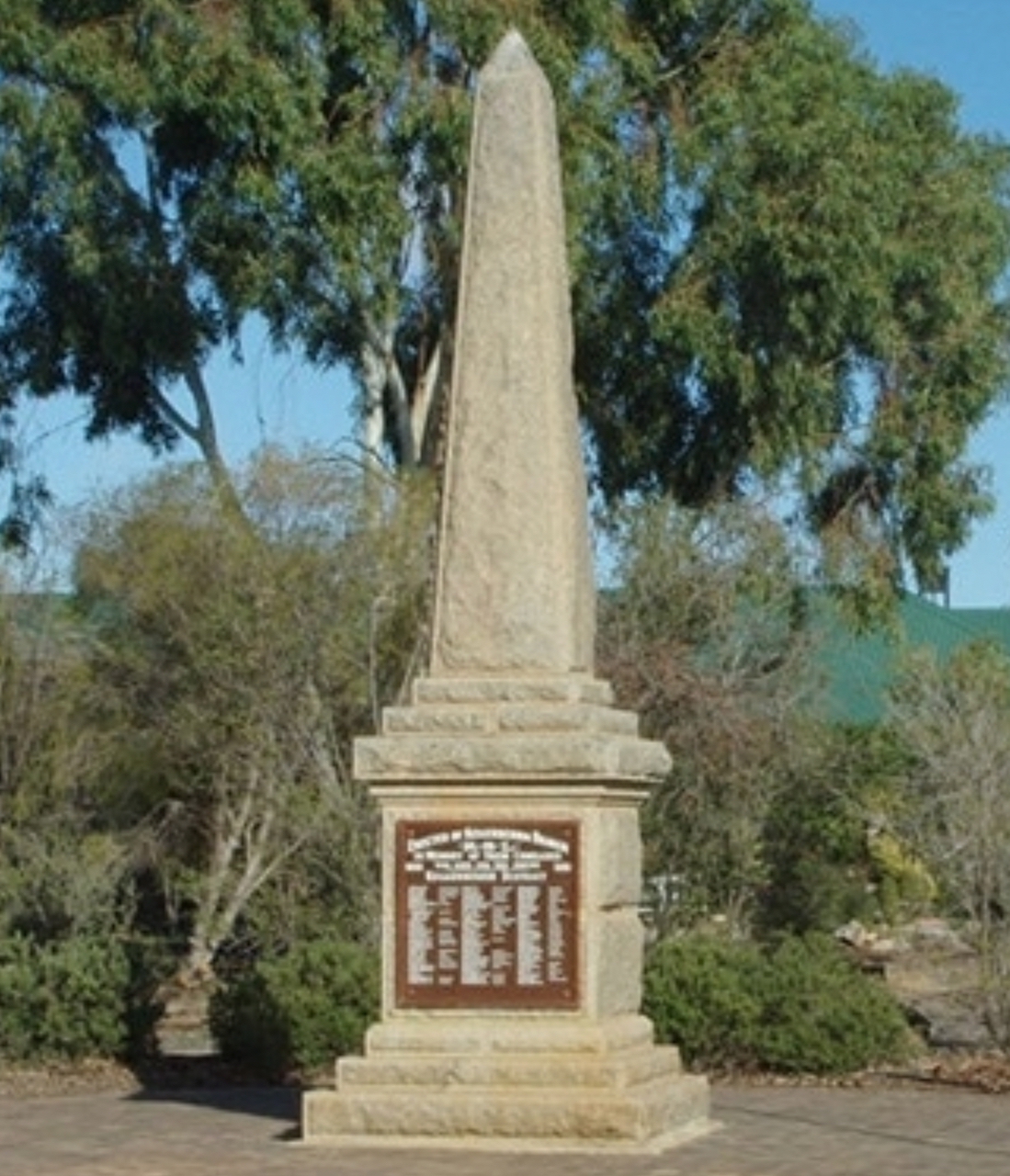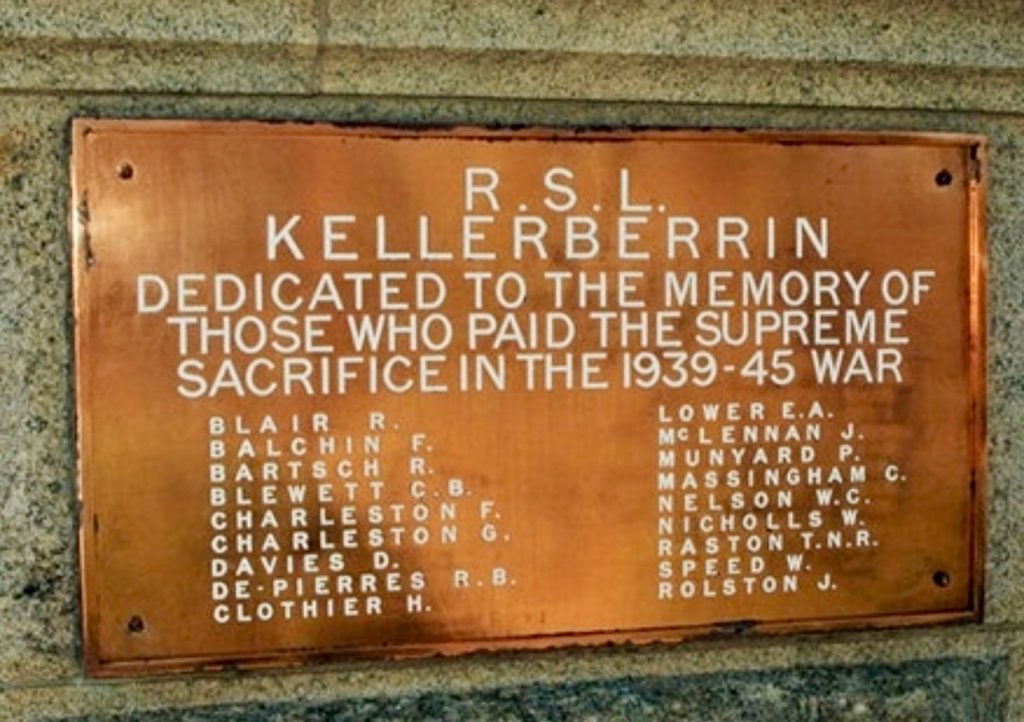We believe there was no loss of lives of 2/4th from Kellerberrin.
CLOTHIER, Thomas Hayward (Hay) died as a POW of Japan, is first cousin to William Ernest (Bill) Clothier WX10379 of Mt. Barker. Their fathers, brothers moved to WA. Bill’s father to Mt. George, William Clothier died Kellerberrin 1942.
Kellerberrin Boys
Below: Farewell Party at Kellerberrin with Eddie Adams, Pat O’Meara and Alf Stevens mentioned.
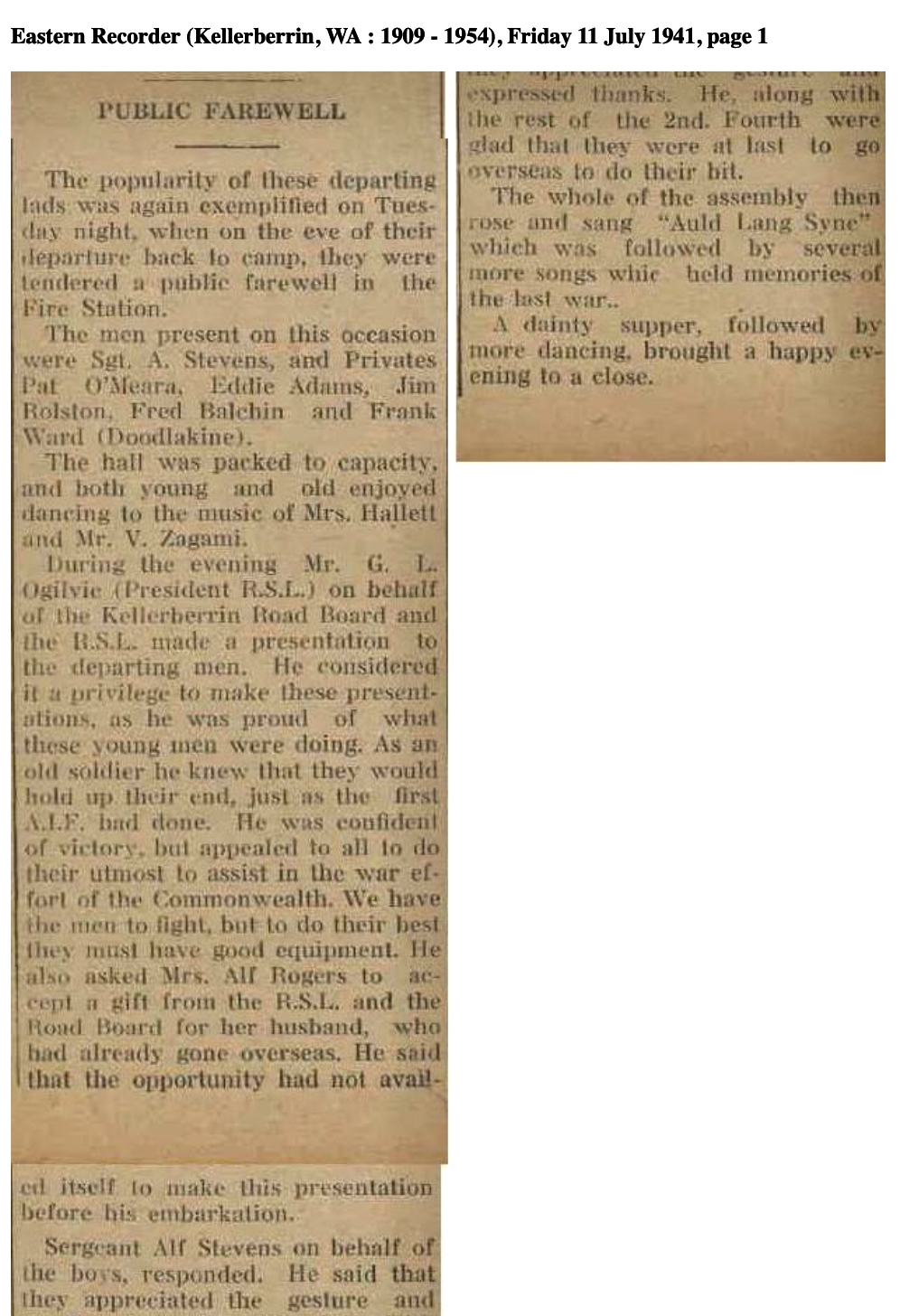
WX8245 ADAMS, Edwin Thomas (Ted or Eddy)) Born Kellerberrin 6 April 1914 to Horace John and Edith Lucy Adams.
Right: Adams and unknown mate in Sydney prior to departing on ‘Aquitania’ to Singapore via Fremantle Jan 1941.

Adams spent most of his life in Kellerberrin. His father was a builder-carpenter and moved there with his wife Edith Lucy and two or three of their eldest children sometime between arriving in Fremantle from England in 1908 and 1912 when their names were recorded on WA Electoral Roll. Both Horace and Edith were born in England and they married Paddington 1905.
Adams enlisted AIF 16 Aug 1940 and later joined 2/4th ‘C’ Company 10 Platoon under CO’s Lt Wilson and Lt Ambrose.
Departed Singapore from Java 7 Jan 1943 with Dunlop Force 6A, entrained to Thailand 19 Jan 1943 with ‘O’ Battalion to work on the railway in vicinity of Hellfire Pass Cutting. Adams was selected ‘fit’ by the Japanese to work in Japan from Tamuang Camp early 1944.
He was entrained to Singapore from Thailand to await a transport ship for Japan which became known as ‘Byoki’ Maru Party and sent first to Yamane and then Niihama Mines.
He worked in the Carpenters section with Jim Elliott from 2/4th and was recovered from Japan at the end of the war.
Adams had his left middle finger amputation 12 Dec 1945. His injury sustained in Japan Sept 1944.
Eddie returned home to find his father had died in 1942.
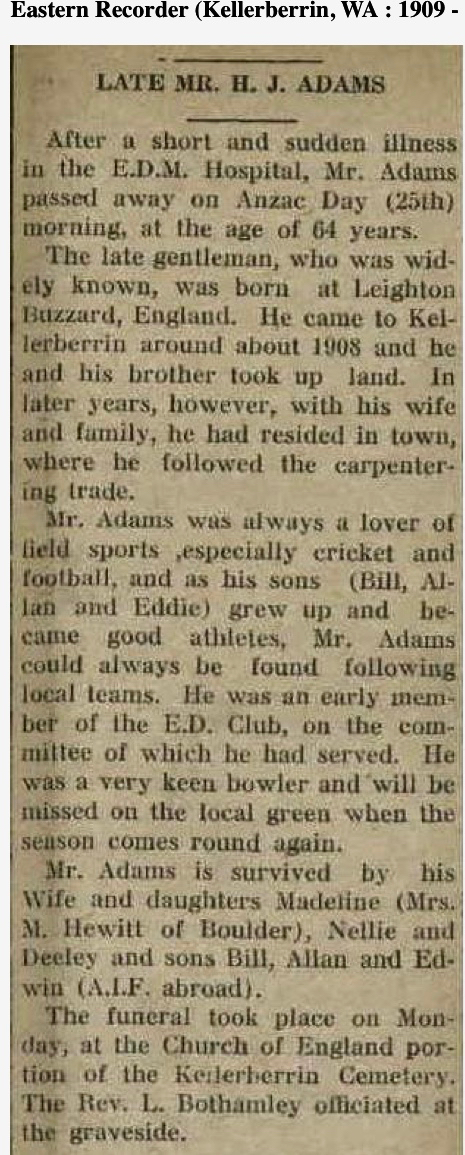
WX10931 HUMMERSTON, Laurence Slade ‘Mick’
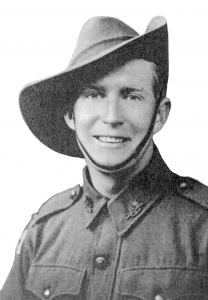
Mick was born in Kalgoorlie 1919 to parents Harry Goldsmith Ada Mary Hummerston. He enlisted 14 Feb 1941 and later joined ‘C’ Company 10 Platoon.
At Singapore he was selected to work on the Buma-Thai Ralway with ‘D’ Force V Battalion.
Please read further about this Work Force.
He was later selected by the Japanese to work in Japan – he sailed with ‘Aramis’ Party and was unfortunate to work at Fukuoka sub-Camp No. 17 Omuta.
Please read about Omuta Camp Japan
You may wish to read further about Omuta, Japan
Mick wrote ‘some of the food at this camp was not too appetising – including dog, whale meat that he described like eating Tarzan’s Grip! When it was the season for persimmons they would eat them endlessly until season was finished, then there were frogs – and they would eat them for a while’.
But there was always tobacco available to buy.
The POWs never had any days off from work. During the latter months they spent time in air raid shelters as the Americans bombed regularly – the sight of the bombers raised the men’s spirits. At the same time they feared the future – when would the Americans invade, and where would they invade? What would happen to them – would they be wiped out by the Japanese?
One day there was a great explosion over the Bay (we were located across the Bay from Nagasaki) and thought the bombing may have hit the gasworks. Next minute they saw a great mushroom of smoke and they felt the shaking of it over the Bay – 30 miles away.
Of course the men did not know about the Atom Bombs at Hiroshima and Nagasaki – eventually they learned the details. There were several hidden radios in the camp. Suddenly the war was over – “but we POWs were to stay where we were. An American Major came into the Camp – all the Japanese had gone.”
The American bombers began dropping food in 44-gallon drums.
Mick Hummerston decided he couldn’t wait around at Omuta for a month to leave as the POWs were advised and about 3 days after the news he with several POWs decided to leave (they were threatened with a court -marshall when caught up with). “Being court-marshalled after being a POW for 4 years would be like having a holiday!”
Looking back Mick decided it was a stupid thing to do – but four of them departed camp. Walking to the Railway Station they intended to head south of the Island where they knew the Americans had taken over the Airport. The group proceeded to take arms off every armed soldier they came across!
On the train journey they had to get out a few times because the railway lines had been destroyed in every large town. They walked to the other side of the town to find another train. Sometimes they were picked up. The cache of arms grew considerably. They must have looked a terrifying sight. Four skinny men in rough clothes each armed with rifles.
Eventually they found there was no railway line to continue their journey. They came across a Japanese kempitai (Military Police) sitting in a truck. The 4 men commandeered the truck and under great duress got the driver to deliver them to where the Americans were, about 30 miles away.
The first American they came across in the perimeter of the air base couldn’t believe his eyes! He asked where they were from. They were probably the first POWs the men had seen.
Mick and his 3 mates were flown out to Manila after a day at the American base. They were provided new clothes. The four of them stayed in Manila for nearly 3 weeks. They were eventually joined by the POWs from Omuta by which time they were quite fat!
Mick was recovered from Omuta at the end of the War.
He moved to live in NSW.
You can listen to an interview with Australian David Runge, Driver with 8th Division, AASC sent to Omuta
Runge was tortured, forced to kneel for days in snow. Camp Dr. Duncan had to amputate legs below the knees. Guards carried legs around laughing. Documented in Whitecross’s excellent book, Slaves of the Son of Heaven. Published in 1951, the book mentions many names and incidents from Camp 17.


Above: Runge being carried off his ship home to Australia 1945.
WX8377 MacLENNAN, Kenneth Thomas (Tom) Sgt b. Mt Margaret, Laverton 1912.
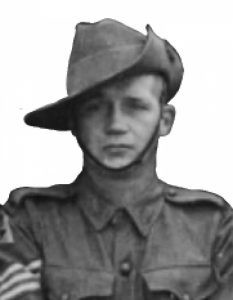
Tom was employed at Kellerberrin before the war at W. Thomas as Co. He was also committed to the Kellerberrin Fire Brigade.
He enlisted AIF 17 Aug 1940 and later joined 2/4th’s ‘A’ Company No. 4 Platoon under CO Lt McCaffery. When Lt. Manning was badly injured (he DOW 12 Feb 1942) Tom was promoted to Platoon Sergeant.
There are media print-outs reporting Tom visited Kellerberrin after the war, however we are not sure he returned to work there.
Eastern Recorder (Kellerberrin) Friday, 14 September 1945 – McLennan & Westlake
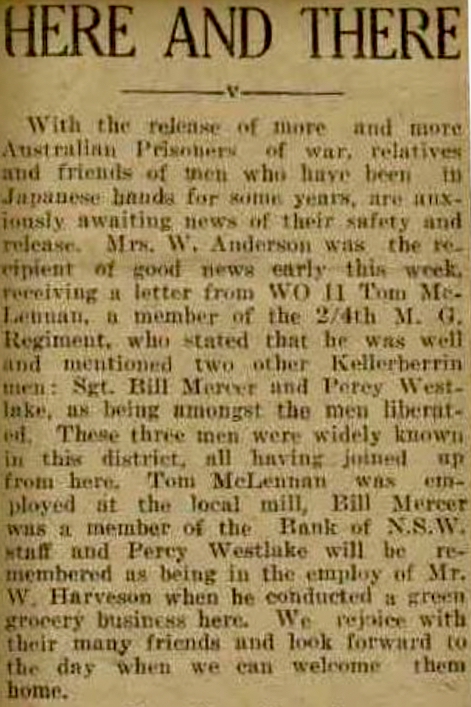
WX227 STEVENS, Alfred (Alf) born Perth 1913. Prior to enlistment, Alf Stevens was employed as an engine driver by Union Flour Mills, Kellerberrin.
As a young man at Kellerberrin Alf played football as did his brother George. In fact Stevens played in same team as Eddie Adams.
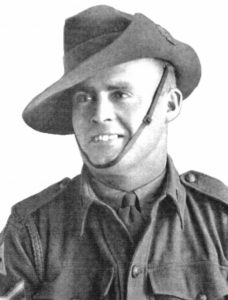
He was one lucky man. He was sentenced to serve a prison sentence at Outram Road Gaol for his role in the Secret Underground at Sandakan.
Please read further.
Stevens had been sent from Singapore with ‘B’ Force Borneo to Sandakan, where POWs would work to construct two airfields.
Alf Stevens captured by Kempitai and taken to Kuching for trial.
72 men from 2/4th lost their lives mostly during 1945 marches from Sandakan to Ranau. Alf was one of three 2/4th to return home to WA.
His time at Outram Road Gaol would have been unimaginable.
Should you like to learn more about Outram Road Gaol please read the life of Billie Young. You can listen to this ABC recording.
https://www.abc.net.au/radionational/programs/earshot/bil-young27s-story/6592728
Alf returned to Kellerberrin and resumed his work at the Mills.
WX9570 WESTLAKE, Percival ‘Percy’ Leonard b. 1917 Aldershot England came to Pinjarra, WA as a Fairbridge Farm Schoolboy.

He worked at Kellerberrin for Mr. Harveson for several years at his Saddler and Motor Trimmer Store, right up until Percy enlisted.
Percy participated in sporting teams and activities and would have known Stevens and Adams.
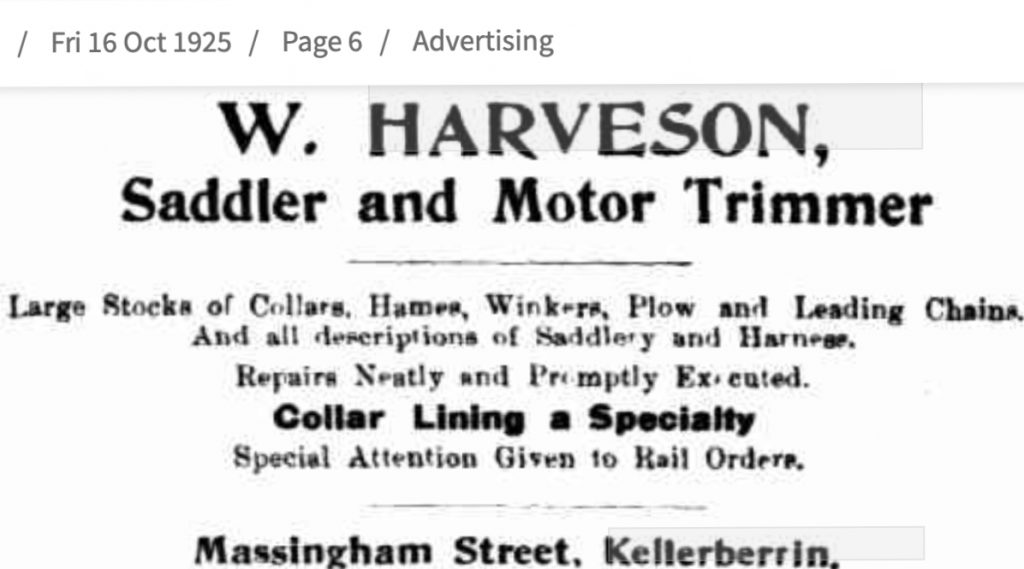
Percy enlisted 4 Dec 1940 and later joined 2/4th’s ‘D’ Coy No. 14 Platoon under C.O. Lt Tomkins. Please read about ‘D’ Company. Westlake received shrapnel wounds to his right knee and abdomen on the night of 8th Feb 1942.
Westlake left Singapore by train for Thailand about mid May 1943 with ‘D’ Force Thailand S Battalion to work on Hellfire Pass Rail cutting.
He was evacuated ill from Kanyu II Camp to Chungkai Hospital Camp and was recovered from Nacompaton Hospital Camp at the end of the war.
Below: Percy Westlake represented Kellerberrin in amateur boxing 1938. (Boxing was a sport encouraged at Fairbridge – as was music and playing musical instruments!)
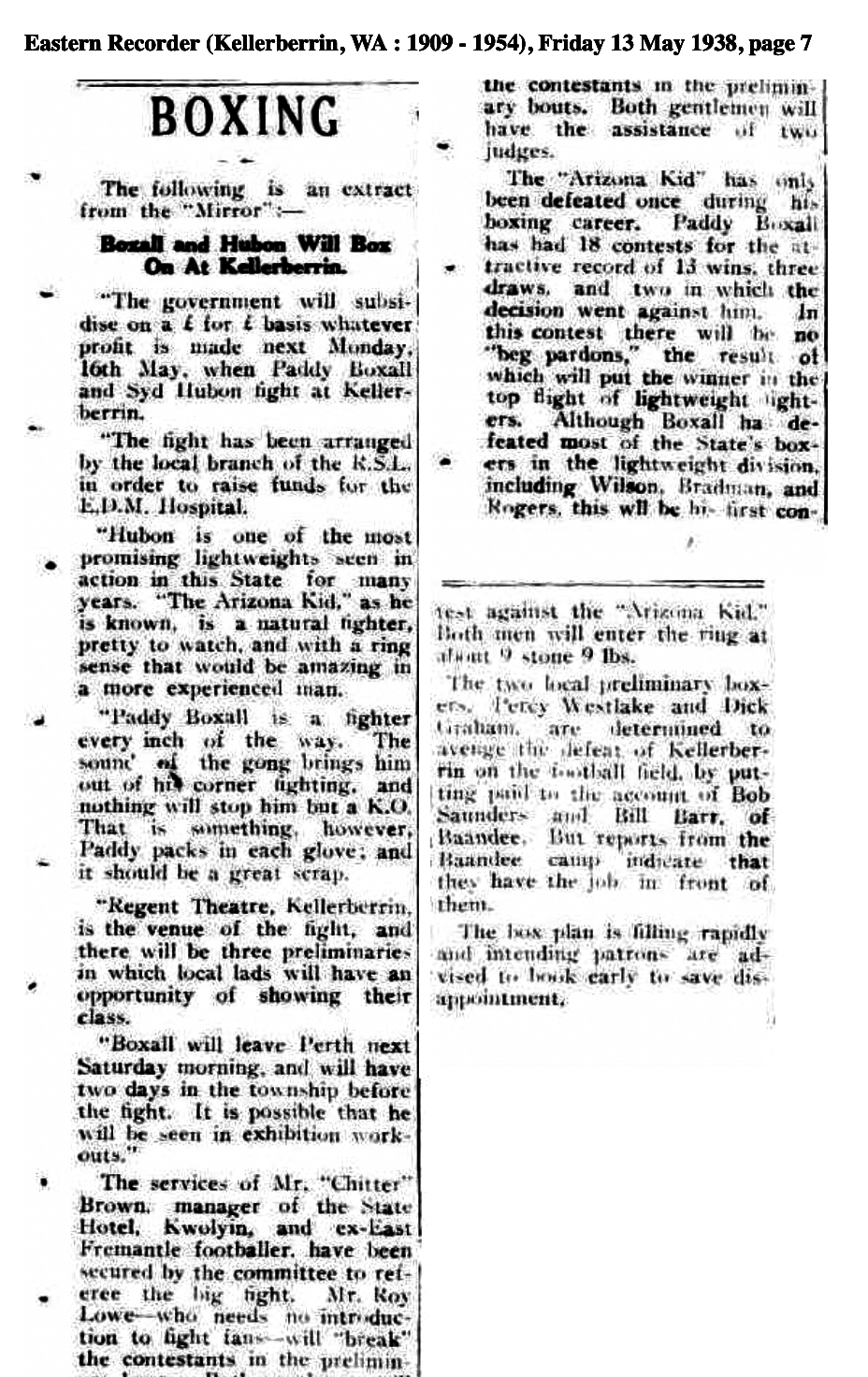
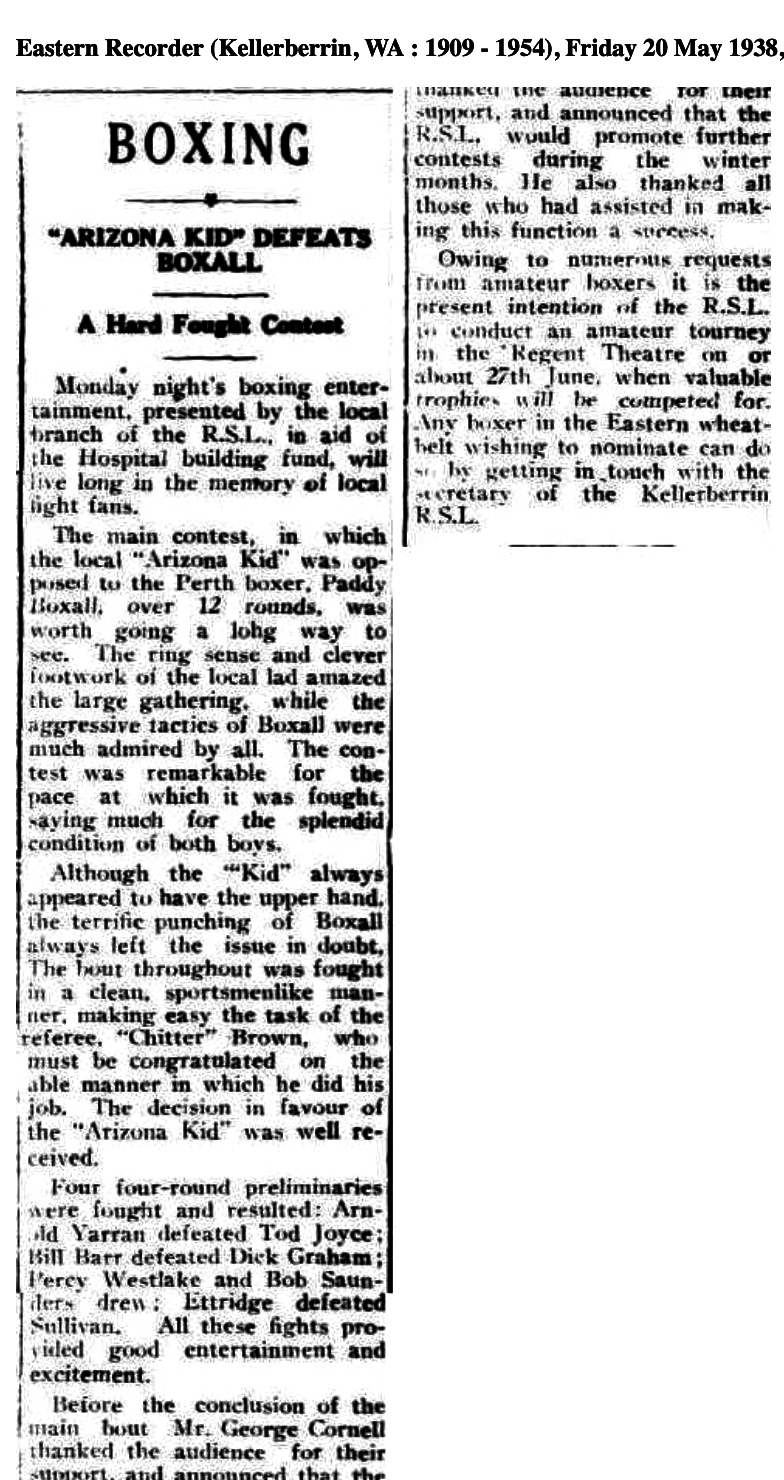
Westlake was a man of many talents – this time in the entertainment field.
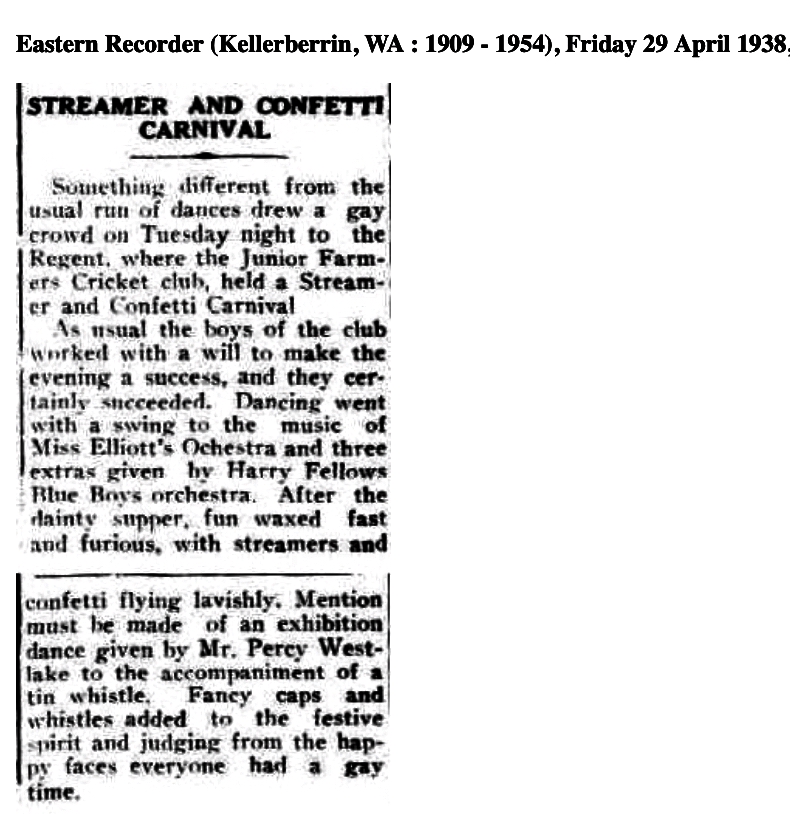
__________
SAGGERS FAMILY, KELLERBERRIN
Parents of Major Albert (Bert) Ernest Saggers WX3454 resided in Kellerberrin for 16 years.
They operated a newsagency store and contributed much to the local community.
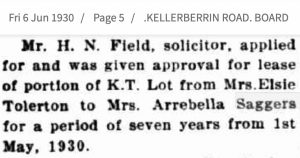
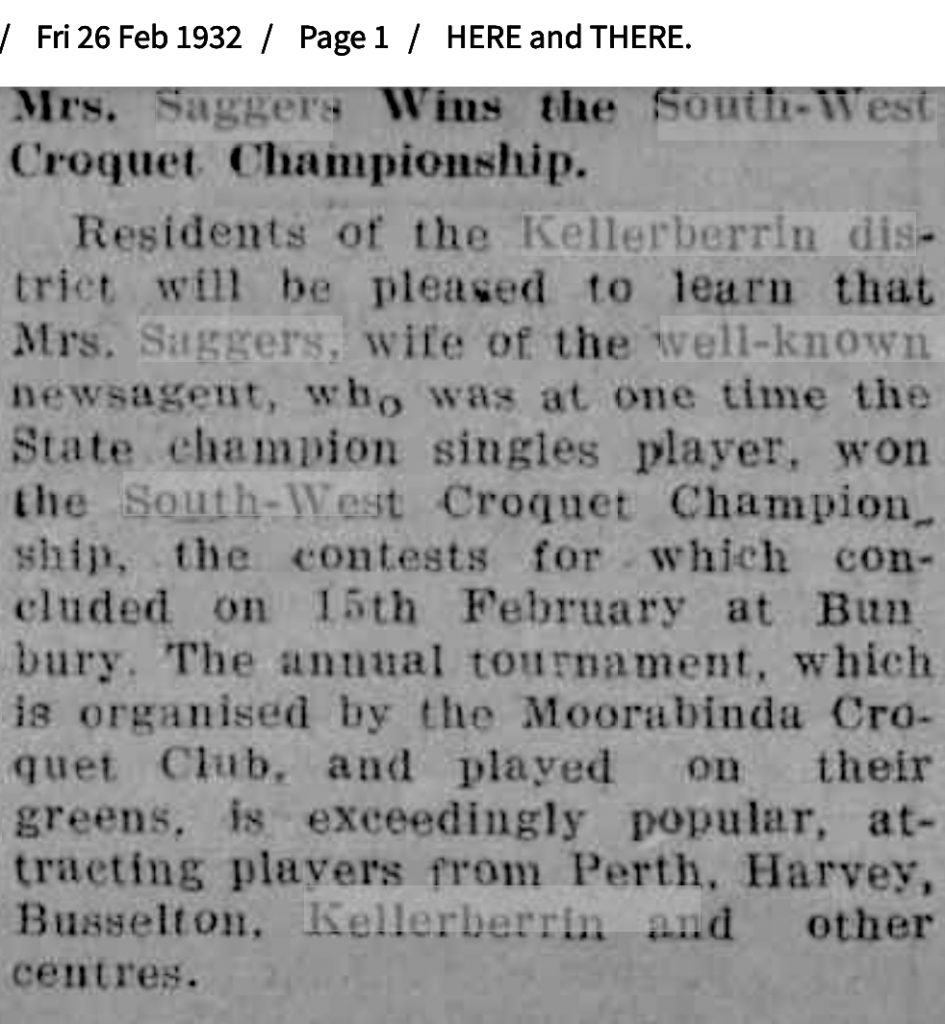
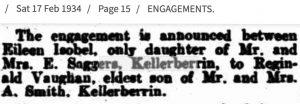
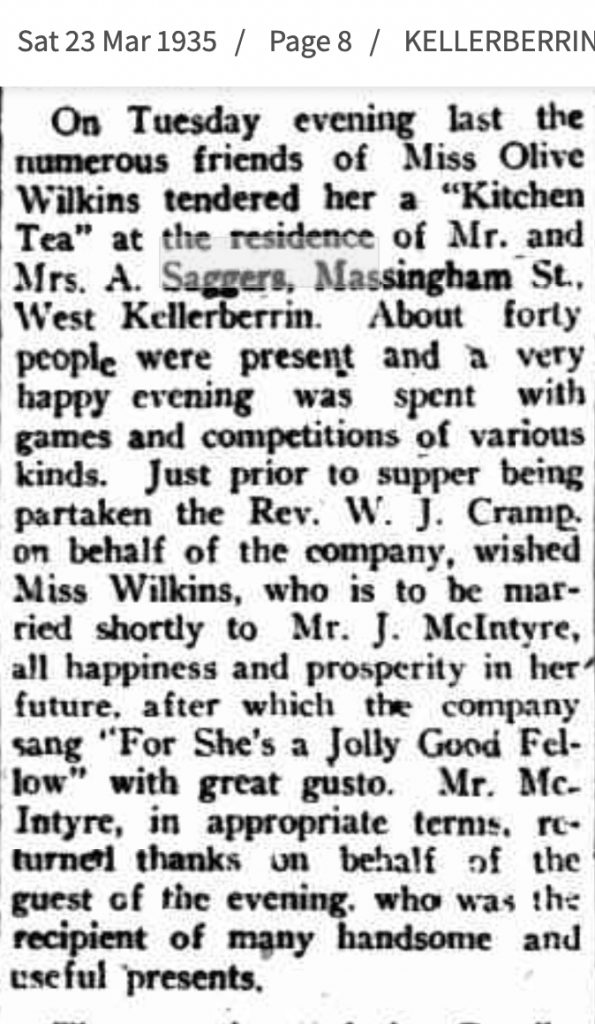
Brother to Bert, Eddie Saggers died in the Middle East. Bert and the family were devastated.
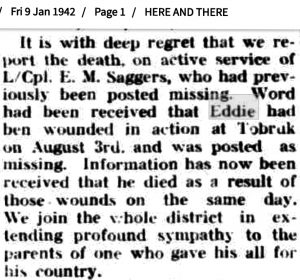
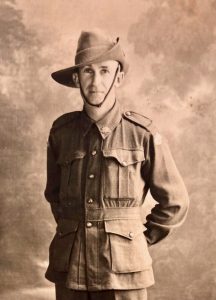
Below: Notices about well-being of Alf Stevens and Major Saggers.
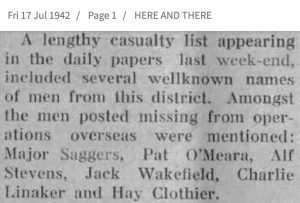
Below: Major Saggers, 2/4th ‘E’ Company SRB
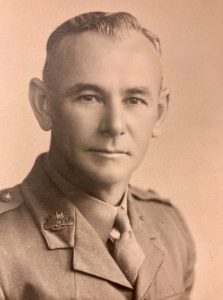

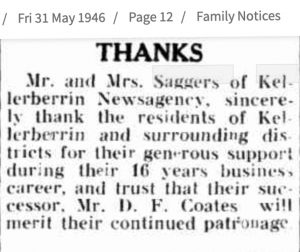
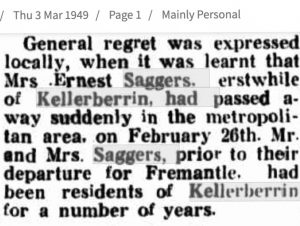
Below: The list includes the three O’Meara boys from Doodlakine.
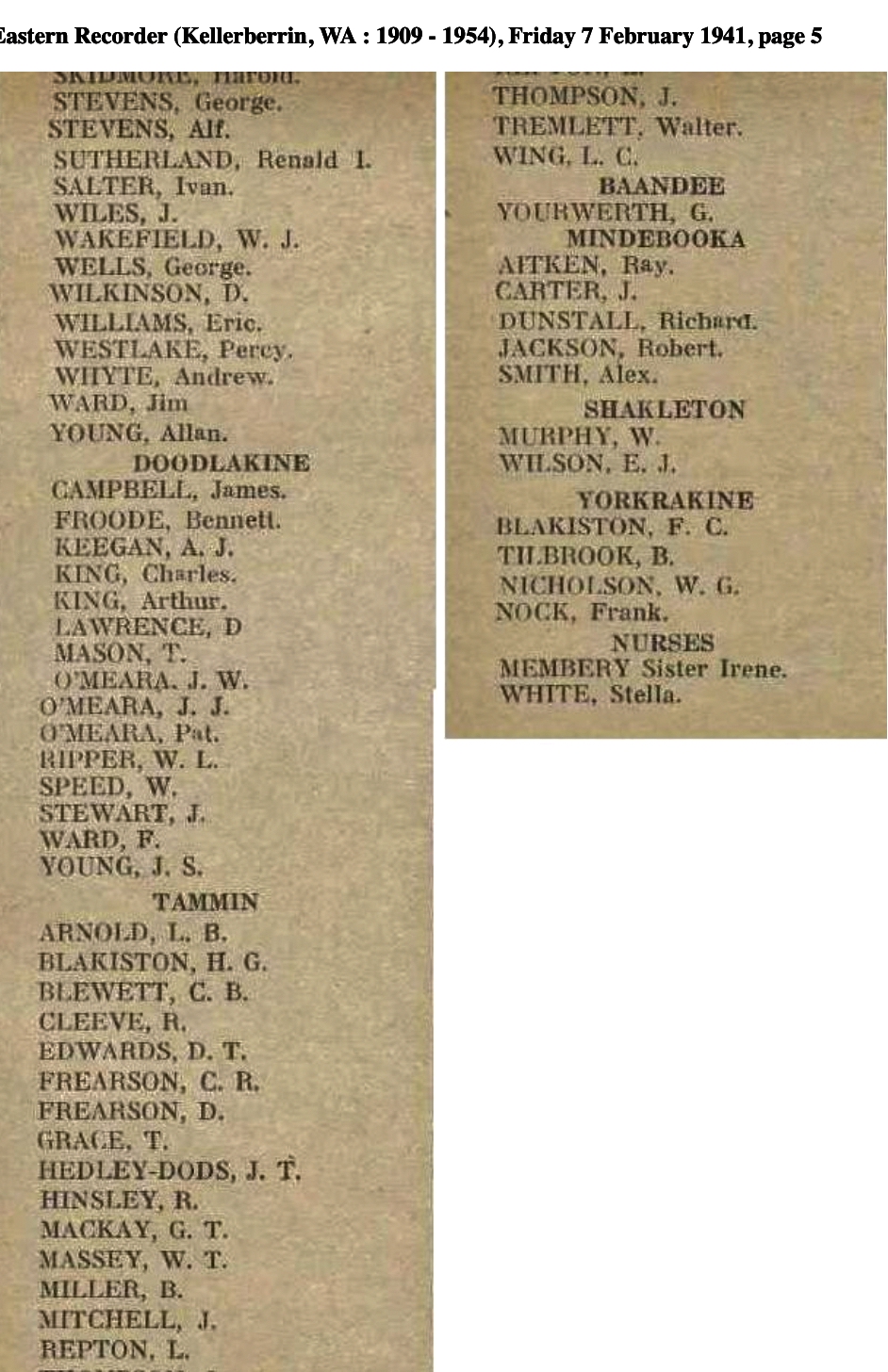
Did you know there was a POW Control Centre in Kellerberrin during WW2?
During 3 June 1944 to 30 May 1946 a POW Control Centre for 200 Italian POWs was planned for Merredin (57kms east of Kellerberrin) – but was too close to military installations. Meckering was the next choice however there was no suitable accommodation.
The number of POWs decreased to 125 and were sent to work at 79 farms from Kellerberrin.

